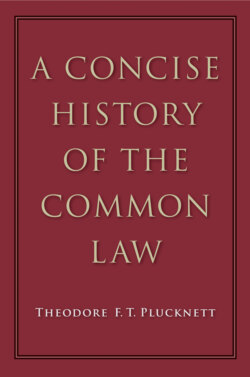Читать книгу A Concise History of the Common Law - Theodore F. T. Plucknett - Страница 100
На сайте Литреса книга снята с продажи.
ENGLISH AND SCANDINAVIAN JURIES
ОглавлениеA third and more plausible suggestion would see an origin of the jury in a remarkable passage in the laws of King Ethelred promulgated at Wantage, which probably dates from about the year 997.1 It is this:
“And that a gemot be held in every wapontake; and the xii senior thegns go out, and the reeve with them, and swear on the relic that is given them in hand, that they will accuse no innocent man, nor conceal any guilty one....”
It cannot be denied that we have here a remarkable anticipation of the Assize of Clarendon which later was to establish as a regular procedure the presentment of suspected criminals by the hundred. There are one or two other traces in various parts of Scandinavia which may point in the same direction, and by the fourteenth century Sweden certainly had a developed system of presenting juries, and indeed had also created a trial jury (called the Nämnd) both in civil and criminal proceedings.2 The origin and the growth of the nämnd seem to be quite independent of the corresponding institutions in England, and in fact it is not unprecedented to find that two different systems independently come to substantially the same conclusion; but when the historian sees the similarity of the conclusions he must beware of assuming that they are the result of direct contact, unless that contact can be proved by independent evidence. It may well be that this passage in the laws of Ethelred, enacted with a view to the Scandinavian institutions prevailing in that portion of England which had been occupied by the Danes, represents an independent tendency of Scandinavian law. Moreover, before we are entitled to see here an origin of the jury, it will be necessary to establish continuity between the Law of Wantage and the jury as it existed after the Norman Conquest. This it is impossible to do, and here is the second lesson for those who would undertake historical investigation. The appearance of a principle or institution in one age, followed by the appearance of the same or a similar institution at a considerably later age, must not lead one to suppose that the later is derived from the earlier. Before this conclusion would be justified further evidence of continuity must be adduced; in the case now before us there is a gap of nearly two hundred years between the Wantage enactment and the next appearance of the presenting jury. Until that gap has been filled by showing continuity between the Anglo-Danish institution and the jury which is continuous from Anglo-Norman times, it would be unsafe to look to Ethelred’s law for the origin of the grand jury.1
